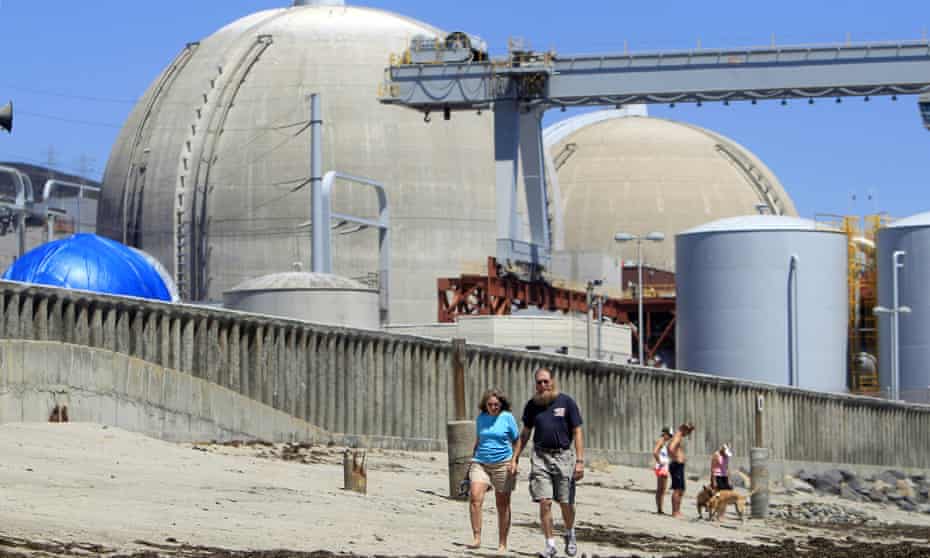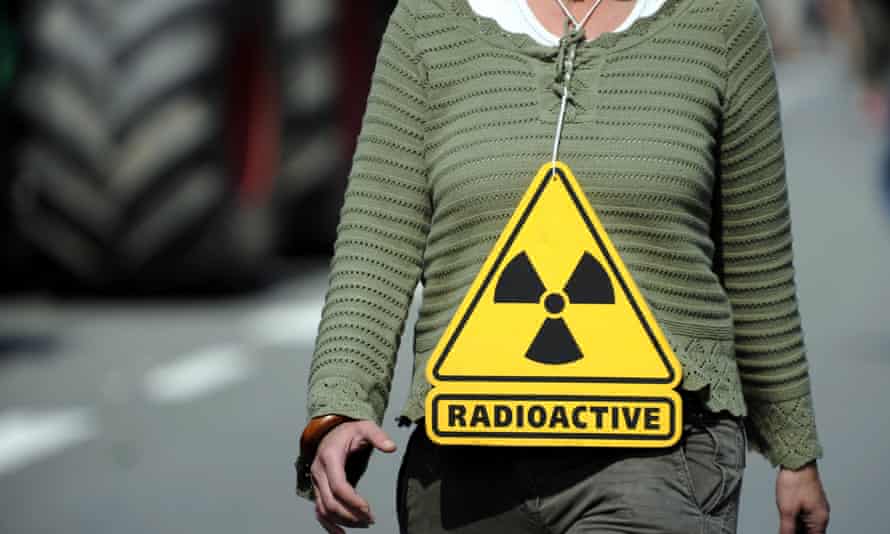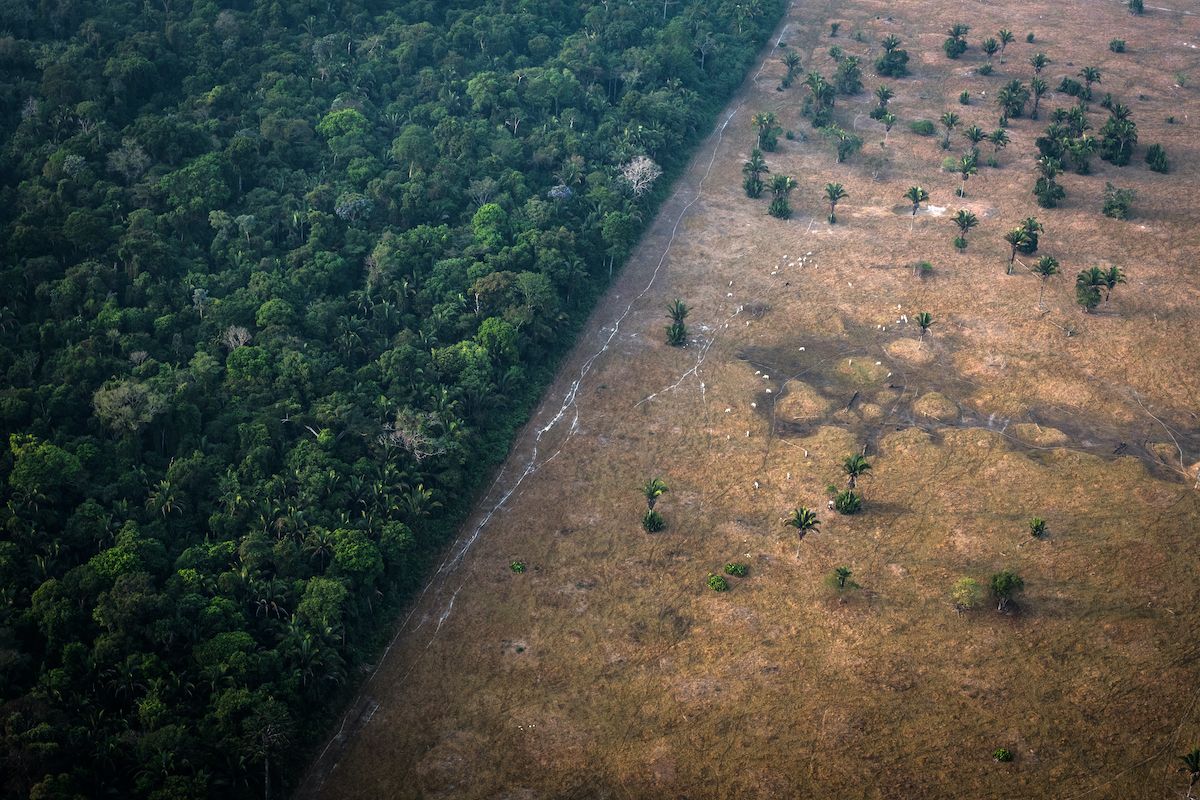
The defunct San Onofre nuclear power plant near San Clemente, California.
Photograph: Lenny Ignelzi/AP
The San Onofre nuclear power plant shut down years ago – but residents and experts worry what will happen with the waste left behind
Kate Mishkin
Tue 24 Aug 2021
More than 2 million visitors flock each year to California’s San Onofre state beach, a dreamy slice of coastline just north of San Diego. The beach is popular with surfers, lies across one of the largest Marine Corps bases in the Unites States and has a 10,000-year-old sacred Native American site nearby. It even landed a shout-out in the Beach Boys’ 1963 classic Surfin’ USA.
But for all the good vibes and stellar sunsets, beneath the surface hides a potential threat: 3.6m lb of nuclear waste from a group of nuclear reactors shut down nearly a decade ago. Decades of political gridlock have left it indefinitely stranded, susceptible to threats including corrosion, earthquakes and sea level rise.
The San Onofre reactors are among dozens across the United States phasing out, but experts say they best represent the uncertain future of nuclear energy.
“It’s a combination of failures, really,” said Gregory Jaczko, who chaired the US Nuclear Regulatory Commission (NRC), the top federal enforcer, between 2009 and 2012, of the situation at San Onofre.
The San Onofre nuclear power plant shut down years ago – but residents and experts worry what will happen with the waste left behind
Kate Mishkin
Tue 24 Aug 2021
More than 2 million visitors flock each year to California’s San Onofre state beach, a dreamy slice of coastline just north of San Diego. The beach is popular with surfers, lies across one of the largest Marine Corps bases in the Unites States and has a 10,000-year-old sacred Native American site nearby. It even landed a shout-out in the Beach Boys’ 1963 classic Surfin’ USA.
But for all the good vibes and stellar sunsets, beneath the surface hides a potential threat: 3.6m lb of nuclear waste from a group of nuclear reactors shut down nearly a decade ago. Decades of political gridlock have left it indefinitely stranded, susceptible to threats including corrosion, earthquakes and sea level rise.
The San Onofre reactors are among dozens across the United States phasing out, but experts say they best represent the uncertain future of nuclear energy.
“It’s a combination of failures, really,” said Gregory Jaczko, who chaired the US Nuclear Regulatory Commission (NRC), the top federal enforcer, between 2009 and 2012, of the situation at San Onofre.
Buried waste
That waste is the byproduct of the San Onofre Nuclear Generating Station (Songs), three nuclear reactors primarily owned by the utility Southern California Edison (SCE).
Federal regulators had already cited SCE for several safety issues, including leaking radioactive waste and falsified firewatch records. But when a new steam generator began leaking a small amount of radioactivity in January 2012, just one year after it was replaced, it was SCE’s most serious problem yet. A subsequent report from the NRC’s inspector general found federal inspectors had overlooked red flags in 2009, and that SCE had replaced its own steam generators without proper approval. SCE tried to fix the problem but decided in 2013 to shut the plant down for good.
Activists thought they had scored a victory when the reactor shut down – until they learned that the nuclear waste they had produced would remain on-site.
That wasn’t supposed to be the case. Under the US Nuclear Waste Policy Act of 1982, the federal government was to move waste into a centralized, remote federal facility starting in 1998. In 2002, George W Bush approved Yucca Mountain, a site about 100 miles from Las Vegas, as a permanent underground nuclear waste repository. But in 2010, the Obama administration scrapped the controversial plan.
Without a government-designated place to store the waste, the California Coastal Commission in 2015 approved the construction of an installation at San Onofre to store it until 2035. In August 2020, workers concluded the multi-year burial process, loading the last of 73 canisters of waste into a concrete enclosure.
San Onofre is not the only place where waste is left stranded. As more nuclear sites shut down, communities across the country are stuck with the waste left behind. Spent fuel is stored at 76 reactor sites in 34 states, according to the Department of Energy.
Handling those stockpiles has been an afterthought to the NRC, the federal enforcer, said Allison Macfarlane, another former commission chair.
“It was not a big topic at the NRC, unfortunately,” Macfarlane said. “In the nuclear industry in general the backend of the nuclear cycle gets very little attention. So it just never rises to ‘oh this is a very important issue, we should be doing something.’”
Plenty of risks, and not enough oversight
The waste is buried about 100ft from the shoreline, along the I-5 highway, one of the nation’s busiest thoroughfares, and not far from a pair of faults that experts say could generate a 7.4 magnitude earthquake.
Another potential problem is corrosion. In its 2015 approval, the Coastal Commission noted the site could have a serious impact on the environment down the line, including on coastal access and marine life. “The [installation] would eventually be exposed to coastal flooding and erosion hazards beyond its design capacity, or else would require protection by replacing or expanding the existing Songs shoreline armoring,” the document says.
Concerns have also been raised about government oversight of the site. Just after San Onofre closed, SCE began seeking exemptions from the NRC’s operating rules for nuclear plants. The utility asked and received permission to loosen rules on-site, including those dealing with record-keeping, radiological emergency plans for reactors, emergency planning zones and on-site staffing.
San Onofre isn’t the only closed reactor to receive exemptions to its operating licence. The NRC’s regulations historically focused on operating reactors and assumed that, when a reactor shut down, the waste would be removed quickly.
It’s true that the risk of accidents decreases when a plant isn’t operating, said Dave Lochbaum, former director of the nuclear safety project for the Union of Concerned Scientists. But adapting regulations through exemptions greatly reduces public transparency, he argued.
“Exemptions are wink-wink, nudge-nudge deals with the NRC,” he said.
“In general, it’s not really a great practice,” former NRC chair Jaczko said about the exemptions. “If the NRC is regulating by exemption, it means that there’s something wrong with the rules … either the NRC believes the rules are not effective, and they’re not really useful, or the NRC is not holding the line where the NRC should be holding line,” he said.
Close calls
In 2015, the NRC tried unsuccessfully to revise its decommissioning rules and reduce the need for exemptions. But commissioners never acted, despite a 2019 Office of Inspector General audit that questioned whether the rule would ever see the light of day and that estimated that eliminating exemptions could save the NRC, utility and taxpayers about $19m for each reactor.
“The problem you have here is that the NRC is simply not doing its job as a regulator. So what it has done is allowed the industry to basically determine the conditions under which this material is stored on a temporary basis across the country,” echoed retired Rear Admiral Len Hering, who served more than 30 years in the US navy and was awarded a 2005 presidential award for leadership in federal energy management from President George W Bush.
Meanwhile, at San Onofre, two close calls drew the ire of activists and townspeople. In 2018, workers found a loose piece of equipment in one of the canisters, causing a 10-day work stoppage to ensure the error didn’t pose a threat to the public. In a separate incident several months later, a canister filled with radioactive waste became wedged when employees were loading it into the ground and nearly dropped 18ft. The second incident was not made public until a whistleblower brought it up at a community event.

Spent fuel is stored at 76 reactor sites in 34 states. Experts say the NRC doesn’t properly monitor this radioactive waste. Photograph: Marcus Brandt/EPA
After these incidents, the NRC cited SCE for failing to ensure equipment was available to protect the canister from a drop, and failing to notify the NRC in a timely manner. In a memo, NRC staff told SCE it was “concerned about apparent weaknesses” in managing storage oversight. SCE was fined $116,000 but permitted to continue loading casks within one year.
Another concern is that the CEO of Holtec, the manufacturer of the canisters, told a 2014 community meeting that the canisters are difficult to repair. “It’s not practical to repair a canister if it were damaged,” Kris Singh said.
Singh walked that statement back last September, but questions remain as to what San Onofre would do if a canister did indeed appear damaged.
According to a plan the California Coastal Commission approved in July 2020, SCE will also inspect two of the 73 buried canisters every five years, and a test canister every two and a half years, starting in 2024.
But critics say they are not confident SCE would self-report given the utility’s record. “It’s a self-reporting industry,” Hering, the retired rear admiral, said. “And they simply can’t be trusted.”
After these incidents, the NRC cited SCE for failing to ensure equipment was available to protect the canister from a drop, and failing to notify the NRC in a timely manner. In a memo, NRC staff told SCE it was “concerned about apparent weaknesses” in managing storage oversight. SCE was fined $116,000 but permitted to continue loading casks within one year.
Another concern is that the CEO of Holtec, the manufacturer of the canisters, told a 2014 community meeting that the canisters are difficult to repair. “It’s not practical to repair a canister if it were damaged,” Kris Singh said.
Singh walked that statement back last September, but questions remain as to what San Onofre would do if a canister did indeed appear damaged.
According to a plan the California Coastal Commission approved in July 2020, SCE will also inspect two of the 73 buried canisters every five years, and a test canister every two and a half years, starting in 2024.
But critics say they are not confident SCE would self-report given the utility’s record. “It’s a self-reporting industry,” Hering, the retired rear admiral, said. “And they simply can’t be trusted.”
Thinking about ‘how systems will fail’
Holtec did not responded to requests for comment for this story.
In an email, a spokesman for the NRC declined to comment on the 2018 incidents at San Onofre, and said that possible accidents are significantly fewer than at an operating reactor.
“The NRC has thoroughly reviewed this issue and believes that the spent fuel can be stored safely on site at San Onofre. It can’t be moved off site because there is no federally approved disposal site for high-level waste, although we are currently reviewing two applications for interim storage facilities in west Texas and New Mexico,” the spokesman said.
Al Bates, manager of regulatory affairs at San Onofre, said there was a probability that incidents “manmade or by Mother Nature” might happen at San Onofre. But if they do, he said, there would be little impact on public safety.
“The fact of the matter is, there’s, yes, it’s high-level nuclear waste. But, yes, the technologies that we’re using are extremely robust for any possible scenarios,” he said.
He also disputed that the exemption process leaves the public out of the process, noting that requests are public record and that SCE adds information about decommissioning to its website and through a community panel.
“It’s an open book,” Bates said. “We’re not trying to get away with anything. We’re doing the same thing that other utilities have done to rightsize regulations around the true nature of decommissioning and the fact that decommissioning is a much lower risk to the public … therefore regulations have to correctly acknowledge that.”
“We have no motivation to hide anything. As a matter of fact, if you want to lose your job in nuclear power try to hide something – you’ll never work in nuclear power again,” said Randall Granaas, senior nuclear engineer at San Onofre.
John Dobken, spokesperson for Songs, also stressed that the waste is stored safely, but said the right thing to do would be to relocate the waste off-site – a decision only the government can make.
“It’s important to know there are some who want to make this about fear and it shouldn’t be about fear,” he said. “It should be about doing the right thing, and the right thing is about relocating the spent fuel from an interim storage site and eventually into a geological repository, and that’s what we’re working towards.”
However, many of these potential problems might have been avoided, Jaczko said, if SCE had considered another location for its fuel, instead of leaving it on the reactor site, or if it had more adequately consulted with the community.
“I think that a better solution could be had with a little bit more work. And it wasn’t done and now it’s created this very polarized community that has strong concerns about what’s being done and doesn’t feel like they’re being listened to. And they’re not,” he said.
It’s worth considering how things fail, though, argued Rod Ewing, nuclear security professor at Stanford University’s center for international security and cooperation, and author of a 2021 report about spent nuclear waste that focuses on San Onofre.
“The problem with our safety analysis approach is we spend a lot of time proving things are safe. We don’t spend much time imagining how systems will fail,” he said. “And I think the latter is what’s most important.”

:max_bytes(150000):strip_icc():format(webp)/GettyImages-1149901729-e3ecbd5294f8493db105fb5d7a325db9.jpg)
:max_bytes(150000):strip_icc():format(webp)/RMI_EmbodiedCarbon_Exhibit1-ef4024129c1d4bf6a00102fd808dda60.jpg)
:max_bytes(150000):strip_icc():format(webp)/upfront-ebb5d49f27c14d5eb460d94b8980455e.jpg)






















